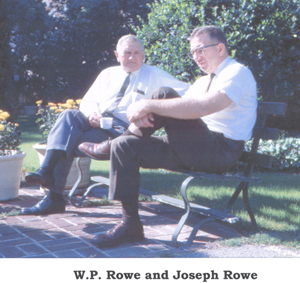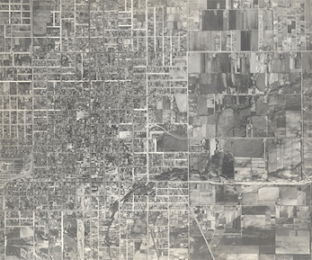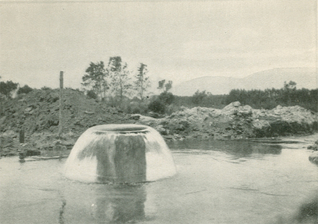The Joseph Andrew Rowe Water Resources Archives main content
The Joseph Andrew Rowe Water Resources Archives began in 1999, with the donation of a lifetime collection from Joseph Andrew Rowe, an engineer who specialized in water resources. Since then, the Archives has grown into a repository of important documents from throughout California, with a primary focus on southern California.

The Archives' cornerstone collection from Joseph (Joe) Andrew Rowe began with Joe's father, William Penn Rowe, who was also an engineer. Penn, as the elder Rowe was called, began the collection in 1916, adding historical documents that date back to the 1870s. The collection continued to grow until the mid-1980s. At the end of his career, Joe Rowe donated the collection to the San Bernardino County Museum, where it remained until the records were transferred to the John M. Pfau Library to be managed by the Water Resources Institute (WRI), now known as the Institute for Watershed Resiliency (IWR).
The collections primarily relate to the Santa Ana River and its tributaries, but includes areas throughout the state of California, such as the Central Valley, Mojave River areas, and Los Angeles. In 2009, in honor of an endowed gift to the WRI Archives from Joe's daughters, Mary Ann McVey and Patricia Rowe Watt, the WRI Archives were named the Joseph Andrew Rowe Water Resources Archives. Today, the collections are maintained by the Pfau Library’s Special Collections and University Archives.
The Archives contains collections from engineers and engineering firms, elected officials, scholars, and water agencies that are housed both onsite at the Pfau Library and the Helene A. Hixon Information Center at the Palm Desert campus.
Contributors:
William Penn Rowe
San Bernardino Valley Municipal Water District
California Department of Water Resources - Southern District
William M. Claypool III
Salton Sea Authority
Types of Materials:
Reports (Engineering and Planning)
Photographs (Aerial)
Government Documents (State and Federal)
Oral Histories
Audio Recordings
Books
Maps
Pamphlets
Drawings
Videos

